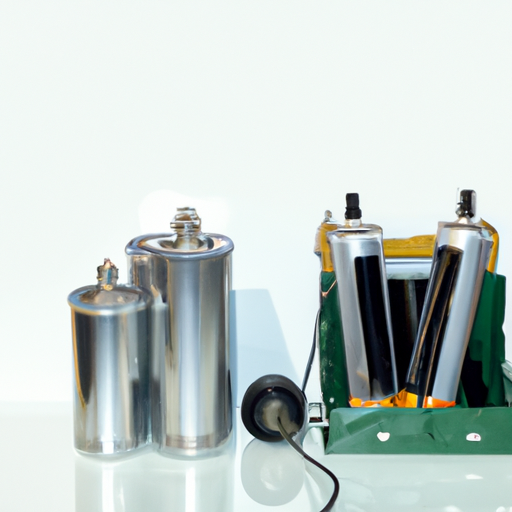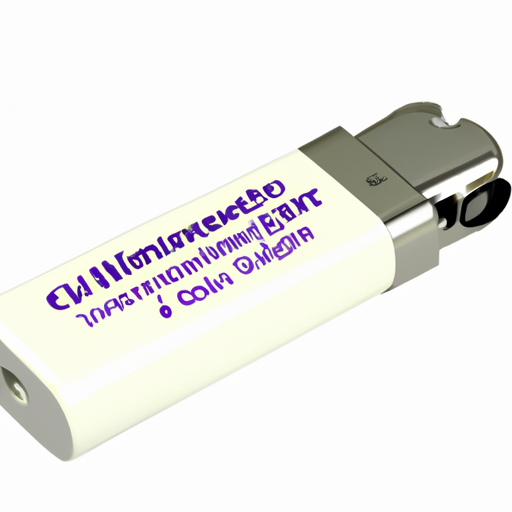What are the Product Features of Lithium Battery Separator Products?
I. Introduction
In the age of rapid technological advancement, lithium batteries have become a cornerstone of modern energy storage solutions. From powering smartphones and laptops to enabling electric vehicles (EVs) and renewable energy systems, lithium batteries are integral to our daily lives. However, the performance and safety of these batteries hinge significantly on a critical component: the separator. This article delves into the product features of lithium battery separator products, highlighting their importance in enhancing battery efficiency and safety.
II. Understanding Lithium Battery Separators
A. Definition of Lithium Battery Separators
Lithium battery separators are thin, porous membranes that serve as a barrier between the anode and cathode in lithium-ion batteries. Their primary function is to prevent direct contact between the two electrodes while allowing the flow of lithium ions during charging and discharging cycles. This separation is crucial for maintaining battery performance and preventing short circuits, which can lead to catastrophic failures.
B. Types of Lithium Battery Separators
1. **Polyethylene (PE) Separators**: These are widely used due to their excellent chemical stability and low cost. PE separators are known for their good mechanical properties and are often employed in consumer electronics.
2. **Polypropylene (PP) Separators**: PP separators offer higher thermal stability compared to PE. They are commonly used in applications requiring enhanced safety, such as electric vehicles.
3. **Composite Separators**: These separators combine different materials to leverage the strengths of each. For instance, a composite separator may integrate PE and PP to achieve a balance of mechanical strength and thermal stability.
C. Importance of Separators in Battery Performance and Safety
The separator plays a pivotal role in the overall performance and safety of lithium batteries. A well-designed separator enhances ion transport, improves battery life, and minimizes the risk of thermal runaway, a phenomenon that can lead to battery fires or explosions.
III. Key Product Features of Lithium Battery Separators
A. Material Composition
1. **Types of Polymers Used**: The choice of polymer significantly influences the separator's performance. Common materials include polyethylene, polypropylene, and polyvinylidene fluoride (PVDF). Each material has unique properties that affect the separator's mechanical strength, thermal stability, and electrochemical performance.
2. **Impact of Material Choice on Performance**: The right material can enhance ion conductivity and chemical resistance, leading to improved battery efficiency and longevity.
B. Thickness and Porosity
1. **Importance of Thickness in Ion Transport**: The thickness of the separator affects the distance lithium ions must travel, impacting the battery's charge and discharge rates. Thinner separators generally allow for faster ion transport but may compromise mechanical strength.
2. **Role of Porosity in Electrolyte Retention**: High porosity is essential for retaining the electrolyte, which facilitates ion movement. A well-porous separator ensures optimal electrolyte distribution, enhancing battery performance.
C. Mechanical Strength
1. **Tensile Strength and Puncture Resistance**: Mechanical strength is crucial for the durability of the separator. High tensile strength and puncture resistance prevent physical damage during battery assembly and operation, reducing the risk of short circuits.
2. **Importance for Battery Durability and Safety**: A robust separator contributes to the overall safety of the battery, ensuring it can withstand various operational stresses without failure.
D. Thermal Stability
1. **Heat Resistance and Its Impact on Battery Safety**: Thermal stability is vital for preventing overheating, which can lead to thermal runaway. Separators with high heat resistance can maintain their integrity at elevated temperatures, enhancing battery safety.
2. **Role in Preventing Thermal Runaway**: By effectively managing heat, separators play a crucial role in preventing thermal runaway, a significant safety concern in lithium batteries.
E. Electrochemical Stability
1. **Compatibility with Electrolytes**: The separator must be chemically stable in the presence of the electrolyte to prevent degradation. Electrochemical stability ensures that the separator does not react with the electrolyte, maintaining battery performance.
2. **Impact on Battery Life and Performance**: A stable separator contributes to longer battery life and consistent performance, making it a critical feature in battery design.
F. Ion Conductivity
1. **Importance of Ionic Transport for Battery Efficiency**: High ion conductivity is essential for efficient battery operation. The separator must facilitate the rapid movement of lithium ions to ensure optimal charge and discharge rates.
2. **Factors Affecting Ion Conductivity**: Factors such as separator thickness, porosity, and material composition all influence ion conductivity. Manufacturers must carefully balance these factors to achieve the desired performance.
G. Chemical Resistance
1. **Resistance to Solvents and Other Chemicals**: The separator must resist degradation from solvents and other chemicals present in the battery environment. Chemical resistance is crucial for maintaining the separator's integrity over time.
2. **Importance for Long-Term Battery Performance**: A chemically stable separator ensures that the battery can operate effectively over its intended lifespan, reducing the risk of failure.
IV. Advanced Features and Innovations
A. Coating Technologies
1. **Benefits of Surface Coatings**: Advanced coating technologies can enhance the performance of lithium battery separators. Coatings can improve thermal stability, chemical resistance, and ion conductivity.
2. **Examples of Advanced Coating Materials**: Materials such as ceramic coatings and polymer blends are being explored to create separators with superior properties.
B. Nanostructured Separators
1. **Advantages of Nanotechnology in Separator Design**: Nanostructured separators can offer enhanced mechanical strength, thermal stability, and ion conductivity. The use of nanomaterials allows for the creation of separators with tailored properties.
2. **Impact on Performance and Safety**: By improving the overall performance and safety of lithium batteries, nanostructured separators represent a significant advancement in battery technology.
C. Self-Healing Properties
1. **Concept of Self-Healing Separators**: Researchers are exploring self-healing materials that can repair themselves after damage. This innovation could significantly enhance the durability and safety of lithium batteries.
2. **Potential Benefits for Battery Longevity and Safety**: Self-healing separators could extend the lifespan of batteries and reduce the risk of failure, making them a promising area of research.
V. Applications of Lithium Battery Separators
A. Consumer Electronics
Lithium battery separators are widely used in consumer electronics, powering devices such as smartphones, laptops, and tablets. Their performance directly impacts the efficiency and safety of these devices.
B. Electric Vehicles (EVs)
In the EV sector, the importance of high-performance lithium battery separators cannot be overstated. They are crucial for ensuring the safety and efficiency of high-capacity batteries used in electric vehicles.
C. Renewable Energy Storage
Lithium battery separators play a vital role in renewable energy storage systems, such as those used in solar and wind energy applications. They help store energy efficiently and safely for later use.
D. Industrial Applications
Various industrial battery systems also rely on lithium battery separators. Their ability to maintain performance under demanding conditions makes them suitable for a range of industrial applications.
VI. Challenges and Future Trends
A. Current Challenges in Separator Technology
1. **Cost and Scalability**: The production of high-quality lithium battery separators can be costly, and scaling up production to meet growing demand remains a challenge.
2. **Environmental Concerns**: The environmental impact of separator materials and production processes is an ongoing concern. Manufacturers are increasingly focused on developing sustainable materials and practices.
B. Future Trends in Lithium Battery Separator Development
1. **Innovations in Materials and Design**: Ongoing research is focused on developing new materials and designs that enhance the performance and safety of lithium battery separators.
2. **Potential for Improved Performance and Sustainability**: As technology advances, we can expect to see separators that not only perform better but are also more environmentally friendly.
VII. Conclusion
Lithium battery separators are a critical component in the performance and safety of lithium batteries. Their unique features, including material composition, thickness, mechanical strength, thermal stability, and chemical resistance, play a significant role in determining battery efficiency and longevity. As technology continues to evolve, innovations in separator design and materials will likely lead to even greater advancements in battery performance and safety. The future of lithium battery separator technology holds promise for improved energy storage solutions that meet the demands of an increasingly electrified world.
VIII. References
A comprehensive list of academic papers, articles, and resources for further reading would typically follow here, providing readers with additional information on lithium battery separators and their features.













